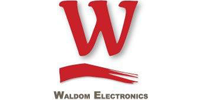Solving the Infrastructure Challenge for Electric School Buses
Download this article in PDF format.
More than 21 million children ride the bus to school in the U.S., and over 90% of these school buses run on fossil fuels. As of November 2024, the World Resources Institute (WRI) says there were nearly 5,000 electric school buses serving approximately 254,000 students in 49 states, Washington, D.C., American Samoa, Puerto Rico and seven tribal schools.
“That means electric school buses are on roads across the country, responding to the call for a clean ride to school,” WRI says in The State of Electric School Bus Adoption in the US. Over 1,500 U.S. school districts and private fleet operators are committed to adding electric buses to their fleets—a 5,000% increase over the number of districts that made similar commitments in 2021.
All of these electric school buses will need places where they can recharge, and a new partnership between First Student (North America’s largest electric school bus operator) and Ampcontrol is going to help make that goal a reality. In March, Ampcontrol announced that First Student had selected its electric vehicle (EV) charging platform to monitor and optimize all of the company’s electric school bus operations.
First Student plans to have 30,000 electric buses by 2035. It will use Ampcontrol’s cloud software, AmpEdge onsite controller solution and professional services to optimize energy and operation of the electric fleet.
“We are proud to work with First Student to transform the future of school transportation,” Ampcontrol’s CEO Joachim Lohse said in a press release. “Together, we’re not just electrifying school buses—we’re redefining how we think about energy, mobility, and environmental responsibility.”
Scaling the Electric Bus Fleet
Jen Harp, First Student’s VP, EV Programs said the new partnership supports the company’s mission of providing safe, reliable, sustainable transportation options to students throughout North America.
“As we scale our electric fleet to 30,000 buses by 2035, partnering with Ampcontrol allows us to harness smart, real-time energy management technology to improve efficiency, reduce costs, and ensure our buses are ready when and where students need them,” she said. “This collaboration is a key part of our strategy to lead the way in school bus electrification.”
Recently surpassing five million electric miles, First Student helps reduce emissions while also setting new standards for safety and efficiency. Kevin Matthews, the company’s head of electrification, recently spoke with The EV Report about the company’s position in the bus electrification sector, the challenges it’s facing and the firm’s future goals. On the challenge front, Matthews says the biggest problem is that the “entire electric vehicle market lacks a charging infrastructure.”
“To make an electric school bus perform, you need to have the right infrastructure in place and most regions in the U.S. aren’t there yet,” he told the publication. “Many school districts have not yet been able to figure out that piece of the equation, and we hear over and over again that they have to abandon rebates and funds available to them because the charging infrastructure is too costly, complex, or time intensive.”
Finding Answers to Common Problems
In October, First Student introduced First Charge, an above-ground, trenchless electrification solution for school districts that use EVs like school buses, garbage trucks and delivery vans. First Charge addresses one of the industry’s biggest hurdles: the lack of charging infrastructure.
First Charge supports 25 electric school buses per power management module. Most school districts choose to bury cable underground, but that requires digging and trenching, which is an expensive approach that limits future expansion and is disruptive to residents, businesses and operations.
"For school districts that want to or need to electrify their bus fleets without spending years building infrastructure or constraining their capital budgets, this modular approach is faster, more affordable and handles expansion better than existing systems,” said John Kenning, CEO, in an announcement about the system. “What makes us most proud of this system, however, is that it provides a better experience for students by putting more electric buses on the roads, creating a safer, more enjoyable ride that’s healthier for children and better for the environment.”








